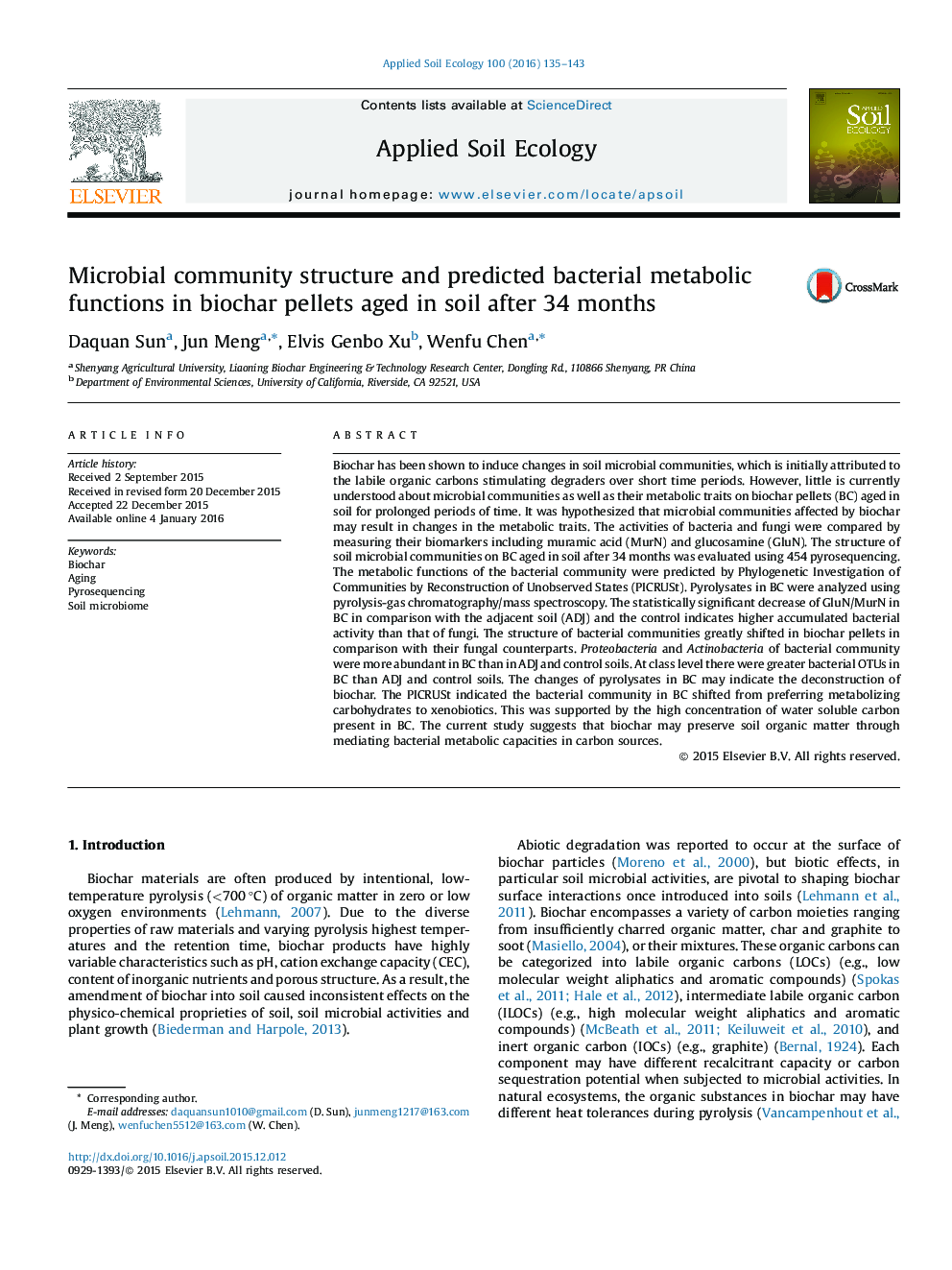| کد مقاله | کد نشریه | سال انتشار | مقاله انگلیسی | نسخه تمام متن |
|---|---|---|---|---|
| 4381809 | 1617783 | 2016 | 9 صفحه PDF | دانلود رایگان |
• GluN/MurN indicates higher accumulated bacterial activity than that of fungi.
• The structure of bacterial communities was more shifted in BC than their fungal counterparts.
• The composition of pyrolysates in BC changed during the 34-months aging process.
• Biochar may preserve soil organic matter through mediating bacterial metabolic capacities in using carbon sources.
Biochar has been shown to induce changes in soil microbial communities, which is initially attributed to the labile organic carbons stimulating degraders over short time periods. However, little is currently understood about microbial communities as well as their metabolic traits on biochar pellets (BC) aged in soil for prolonged periods of time. It was hypothesized that microbial communities affected by biochar may result in changes in the metabolic traits. The activities of bacteria and fungi were compared by measuring their biomarkers including muramic acid (MurN) and glucosamine (GluN). The structure of soil microbial communities on BC aged in soil after 34 months was evaluated using 454 pyrosequencing. The metabolic functions of the bacterial community were predicted by Phylogenetic Investigation of Communities by Reconstruction of Unobserved States (PICRUSt). Pyrolysates in BC were analyzed using pyrolysis-gas chromatography/mass spectroscopy. The statistically significant decrease of GluN/MurN in BC in comparison with the adjacent soil (ADJ) and the control indicates higher accumulated bacterial activity than that of fungi. The structure of bacterial communities greatly shifted in biochar pellets in comparison with their fungal counterparts. Proteobacteria and Actinobacteria of bacterial community were more abundant in BC than in ADJ and control soils. At class level there were greater bacterial OTUs in BC than ADJ and control soils. The changes of pyrolysates in BC may indicate the deconstruction of biochar. The PICRUSt indicated the bacterial community in BC shifted from preferring metabolizing carbohydrates to xenobiotics. This was supported by the high concentration of water soluble carbon present in BC. The current study suggests that biochar may preserve soil organic matter through mediating bacterial metabolic capacities in carbon sources.
Journal: Applied Soil Ecology - Volume 100, April 2016, Pages 135–143
